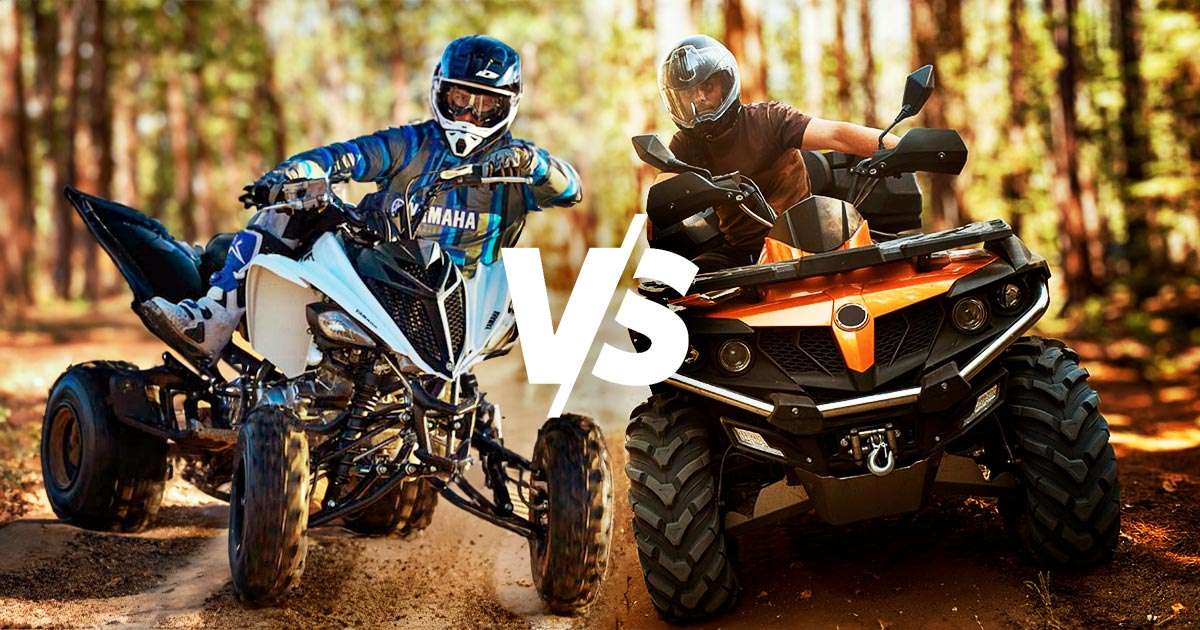ATV vs Quad: Guide to the Key Differences for Your Off-Roading Adventures

Extreme sports are not for the faint of heart. They require more than just the will to face danger; they demand a deep understanding of safety measures and the right equipment. Extreme doesn’t necessarily mean dangerous. Whether you’re plunging into water sports, soaring through the sky, or performing ground stunts, your equipment plays a critical role in both your safety and your success. If one’s hobby is offroad racing, one of the most significant decisions is choosing between an all-terrain vehicle (ATV) and a quad.
ATVs
All-terrain vehicles, often referred to as ATVs, have grown increasingly popular over time. Their ability to navigate nearly any type of terrain has made them a top choice for off-road enthusiasts.
In essence, an ATV is a motorized vehicle with wide, low-pressure tires, a seat that the rider can straddle, and handlebars for steering. The unique feature of ATVs is their exceptional capability to traverse diverse environments that would typically be challenging for most vehicles.
The name ‘All-Terrain Vehicle’ accurately reflects this versatility. It denotes a vehicle capable of handling various terrains, giving riders the ultimate freedom to explore without limitations. This flexibility has not only boosted their popularity but also made them essential for various outdoor activities.
Quads
Quads, another off-roading marvel, occupy a significant position in the world of extreme sports. Both thrill-seekers and adventure enthusiasts adore these four-wheeled powerhouses. Quads, much like ATVs, provide an exhilarating mix of versatility and excitement.
A quad, fundamentally, is a four-wheeled motorized vehicle that’s designed for off-road use. Similar to ATVs, they come with large, low-pressure tires, a straddle seat, and handlebars for steering. The distinguishing feature of Quads, however, lies in their fixed structure; they always come with four wheels, earning them the name ‘Quad,’ short for ‘quadruplet.’
This well-structured design provides a unique balance and stability on various terrains, making quads a popular choice for both recreational rides and competitive racing. Their robust build and superior handling capabilities set them apart from their ATV counterparts and add to their appeal among off-roading enthusiasts.
ATVs vs Quads: A Comparison of Their Similarities and Differences
When it comes to off-roading, both ATVs and quads are popular choices. While they share several characteristics, they also have unique features that set them apart. Here’s a list that breaks down their similarities and differences to help you choose the right vehicle for your next adventure.
Similarities
1. Purpose
Both ATVs and quads are designed with one main goal: to conquer diverse terrains. They are built to handle rough and challenging landscapes, making them ideal for off-roading.
2. Design
Both vehicles come equipped with large, low-pressure tires, a seat that the rider straddles, and handlebars for steering control. These features enable them to navigate through different terrains with relative ease.
3. Use
Both ATVs and Quads are used for a range of activities, from leisurely rides to competitive racing. They each offer an exciting off-road experience to the riders.
Differences
1. Number of Wheels
The defining difference between ATVs and quads is the number of wheels. ATVs can have either three or four wheels, offering a unique advantage in terms of maneuverability and agility. Particularly, three-wheeled ATVs can deliver a thrilling ride due to their ability to navigate tricky terrain with surprising nimbleness. However, this very feature can also be a drawback, as three-wheeled ATVs tend to be less stable, making them prone to tipping over, especially for inexperienced riders.
On the other hand, quads, true to their name, always sport four wheels. This fixed structure provides them with a significant edge in stability, making quads a safer and more balanced choice, particularly for beginners or those who prioritize a steady ride over adrenaline-pumping challenges. Nonetheless, this additional stability can sometimes translate into less agility, potentially making quads less exciting for thrill-seekers compared to their three-wheeled counterparts.
2. Stability
Quads offer more stability due to their four-wheel structure, which is a significant advantage for those seeking a safe and balanced ride. However, this can also make them less exciting for thrill-seekers who enjoy the unpredictability and challenge of a less stable vehicle like a three-wheeled ATV.
3. Maneuverability
ATVs, especially those with three wheels, are generally more agile and offer more maneuverability. This can make for a more exciting ride but may also present more risk, particularly for inexperienced riders.
4. Safety
Quads, with their additional stability, are often considered safer than three-wheeled ATVs, which can tip over more easily. However, all off-road vehicles come with inherent risks, and safety largely depends on the rider’s skills and precautions.
Choosing Your Off-Road Vehicle: An ATV or a Quad?
The realm of off-road vehicles is both exciting and challenging. The Consumer Product Safety Commission reported about 93,800 ATV-related injuries treated in emergency departments in the US in 2017, with children under 16 accounting for roughly 26%. This highlights the vital importance of safety precautions when operating ATVs or quads.
Interestingly, despite these risks, the appeal of off-roading remains strong. The global off-road vehicle market was worth USD 22.09 billion in 2022 and expects a 5.3% compound annual growth rate from 2023 to 2030, as per Grand View Research. This upward trend can be attributed to an increasing interest in outdoor recreational activities, advancements in vehicle technology, and the adrenaline rush these vehicles offer.
In conclusion, whether you opt for an ATV or a Quad depends on your personal preference, stability needs, and the kind of off-roading experience you desire. Both have their unique benefits and challenges, and it’s crucial to consider your abilities, the terrain you’ll be traversing, and your comfort level with maneuverability versus stability.
Regardless of your choice, safety must always come first. Ensure you wear the right safety gear, abide by local regulations, and never push beyond your skills. Enjoy your off-roading adventure!

